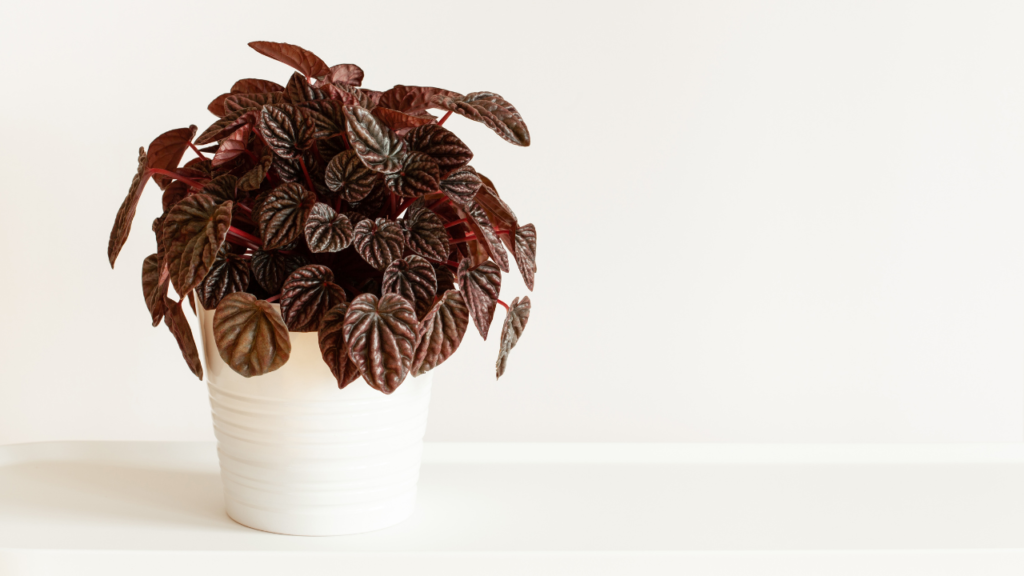Peperomia plants, often hailed as the radiant gems of the botanical world, offer a mesmerizing blend of vibrant foliage, diverse textures, and an innate ability to purify the air. Native to the tropical regions of Mexico, South America, and the Caribbean, these plants belong to the vast Piperaceae family. With over 1,500 known species, Peperomias are celebrated for their drought tolerance, thanks to their succulent-like, fleshy leaves.
| Peperomia Quick Reference | |
|---|---|
| Attribute | Information |
| 🍀Common Names | Baby rubber plant, pepper elder, radiator plant, shining bush plant, emerald ripper pepper |
| 🌿Botanical Name | Peperomia spp. (including P. caperata, P. obtusifolia, and others) |
| 🍃Family | Piperaceae |
| 🌾Plant Type | Perennial, epiphyte |
| 📏Mature Size | 6–12 in. tall, 6–12 in. wide |
| ☀️Sun Exposure | Full or partial |
| 🌍Soil Type | Moist but well-drained |
| ⚖️Soil pH | Neutral to acidic |
| 🌼Bloom Time | Summer |
| 🎨Flower Color | White, green, brown |
| ❄️Hardiness Zones | 10–12 (USDA) |
| 🌎Native Area | Central America, South America, and the Caribbean |
The Peperomia Palette: A Spectrum of Shapes and Shades
Peperomias are not just about greenery; they are a canvas of nature’s most vivid colors and patterns:
- Emerald Ripple Peperomia: A heart-stealer with its heart-shaped leaves, rippling with textures and occasionally flashing hints of silver or burgundy.
- Watermelon Peperomia: A visual treat with leaves that mirror the patterns of a juicy watermelon slice, adorned with silver stripes.
- Baby Rubber Plant: An upright charmer, its thick, waxy leaves can either shine in solid green or dazzle with variegated patterns of gold and white.
The sheer diversity within the Peperomia genus is astounding. From the Baby Rubber Plant that often gets mistaken for its distant cousin, the rubber plant, to the ornate Watermelon Peperomia, each species is a unique masterpiece.
Mastering Peperomia Care: Tips for a Thriving Plant
- Light: Peperomias bask in medium to bright indirect light. A spot near a west or east-facing window is ideal. Shield them from direct sunlight to prevent leaf scorching.
- Soil: Mimic their natural epiphytic environment with a chunky, loose, and acidic soil blend. An orchid potting mix or a blend of regular potting soil with coco coir and perlite ensures optimal aeration.
- Water: Let the topsoil dry out between waterings. These plants have a succulent-like nature, storing water in their leaves, making them somewhat drought-tolerant.
- Temperature & Humidity: As tropical natives, Peperomias love warmth and humidity. Ensure temperatures don’t drop below 50°F and consider using a humidifier or placing them on a tray with pebbles and water to maintain humidity.
- Fertilizer: During the growing season, a diluted liquid fertilizer once a month suffices. Remember, less is more.
Peperomia’s Blooming Marvel
While Peperomias are primarily grown for their ornate leaves, they do occasionally bloom. Their flowers are unique, appearing as slender spikes of brown and greenish-white. While not as visually striking as their foliage, they add a touch of elegance to the plant.
Guarding Against Pests & Problems
Peperomias are generally resilient but can occasionally face issues like mealybugs, spider mites, and whiteflies. Insecticidal soap is a gentle yet effective remedy. Overwatering can lead to root rot, so ensure good drainage and monitor watering frequency.
Mastering Peperomia Care: Essential Tips for Thriving Houseplants
Peperomia plants are a testament to nature’s boundless creativity. Their varied appearances, combined with their air-purifying qualities, make them a must-have for plant enthusiasts and novices alike. Whether you’re looking to add a touch of the tropics to your living space or seeking a resilient companion for your office desk, Peperomias promise beauty, vigor, and a breath of fresh air.
House Plant Essentials
Peperomia FAQs
What is a Peperomia plant?
Peperomia is a genus in the peppercorn family Piperaceae, home to over a thousand species of diverse plants. Popular houseplants like the Watermelon Peperomia, Ripple Peperomia, and Baby Rubber Plant belong to this genus. They are primarily grown for their ornamental foliage and are known for their adaptability and visual appeal.
How much sunlight does a Peperomia need?
Most varieties of Peperomia plants prefer medium to bright indirect light but can tolerate low indirect light. They are not suited for intense, direct sun as it can cause their leaves to fade.
How often should you water a Peperomia?
Water Peperomia plants every 1-2 weeks, allowing the potting soil to dry out between waterings. Overwatering can lead to yellowing leaves and root rot, so it’s essential to ensure the soil isn’t kept constantly wet.
Are Peperomia plants pet-friendly?
Yes, Peperomia plants are non-toxic and pet-friendly. However, it’s always a good practice to keep houseplants out of reach of pets and small children to avoid any potential issues.
How big does a Peperomia get?
Peperomia plants are popular houseplants because of their compact size. Indoors, most Peperomia species will remain relatively small, typically not surpassing two feet in height.
